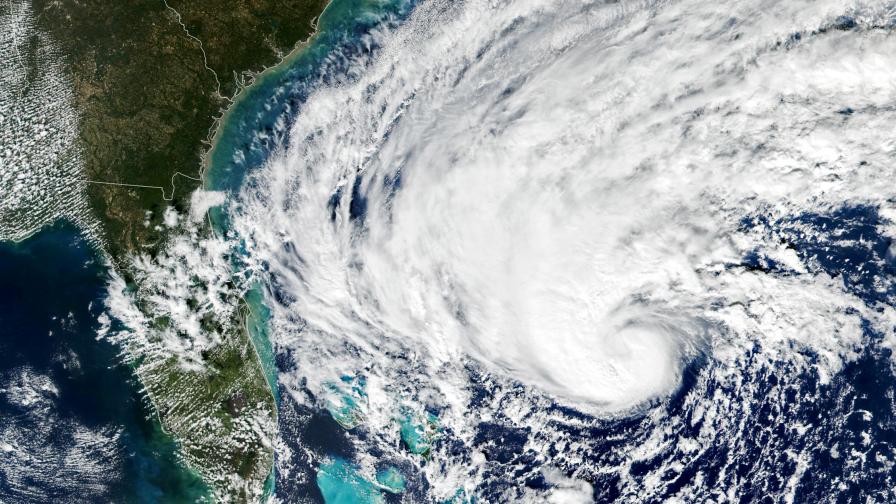When It Rains It Pours: Dual Hurricane Strikes Impacting Ag Loss Estimates

This satellite view shows the still developing system that would turn into Hurricane Nicole before making landfall along Florida’s East Coast on Nov. 10, 2022.
Image courtesy of NASA Earth Observatory
It doesn’t seem that long ago when major Hurricane Ian steam-rolled across the Florida Peninsula. And it wasn’t. With damage wounds still fresh and oversaturated ground plentiful, Hurricane Nicole came along and slammed the Sunshine State last week — just 43 days after. The Category 1 storm (at landfall) brought more rain and wind to agricultural areas that were in recovery mode. Nicole not only exacerbated the situation for farmers, but also ag economists trying to sort through and calculate losses.
“The impact to agricultural production due to Hurricane Ian is not only still being felt – it’s still not entirely accounted for,” says Christa Court, Assistant Professor in UF/IFAS’ Food and Resource Economics Department. “Much of this area has already experienced two extreme weather events in 2022 – a hard freeze in January and Hurricane Ian in September – making our baseline data less accurate, and now we’re adding a third event.”
Hurricane Ian brought hurricane-strength (74 to 156 mph) winds to nearly 1.2 million acres of agricultural lands, including a large swath of citrus-producing counties. Court anticipates a final report on the economic impact of Ian could be completed by the end of November. Early estimates between UF/IFAS and the Florida Department of Agriculture put damages up to nearly $2 billion.
“The crop may already be lower quality or quantity after Ian than in previous years,” she adds, “and although it’s rare that we get reports of total losses from a farm, my program also hasn’t yet measured two hurricanes in the same growing season impacting the same area.”
Court says post-storm assessment surveys – completed via an online survey or paper survey by local Florida Cooperative Extension agents or producers themselves – aim to capture impacts to production and sales revenues for the wide variety of commodities covered. Even ancillary components of operations can be affected, and these impacts will be captured, although she notes the value of infrastructure losses is more difficult to estimate.
Court emphasized that surveys deployed by her program are among the tools used to inform the official processes of disaster declaration and disaster relief and recovery efforts. Another survey has been released following Nicole, and she encourages agricultural producers to assess their lands as soon as it is safe to do so and to report their observations, even if damage and losses were minimal or zero.
“I recognize the potential for survey fatigue, which is why we continue to adjust our survey to be as straightforward as possible,” Court says. “Our survey for Hurricane Ian has hit a record number of responses, and we thank all who have helped us capture a more accurate representation of its damage and resulting losses. It is important that we can do the same for anyone whose lands are affected by Hurricane Nicole.”
Producers are encouraged to access the survey at go.ufl.edu/nicoleagimpacts.









